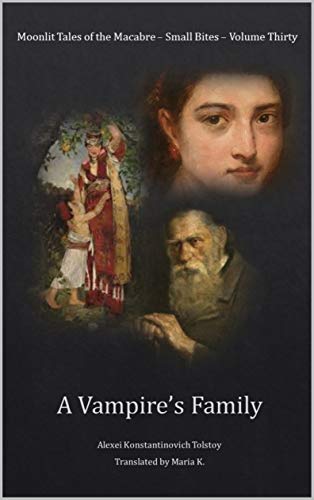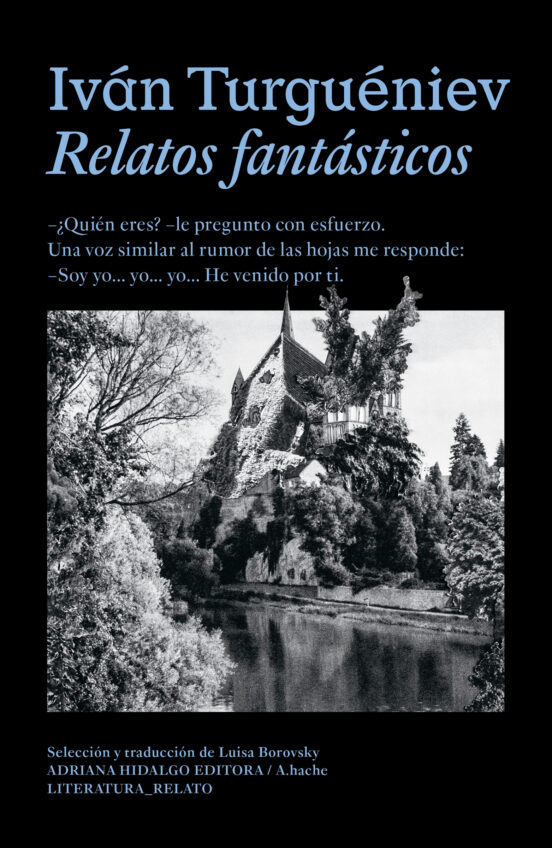Vampires ~ Stories of the Supernatural (The Vampire; The Family of a Vourdalak)12:20 Jun 20 2023
Times Read: 154

This novel was originally published under various titles and was written by a non-English and non-American writer, Alexei Tolstoi, (not Leo Tolstoi, the one of Anna Karenina, War and Peace, Resurrection or The Cossacks).
Alexei is "another Tolstoi", related to the previous one, but different. This does not detract from his work, but on the contrary. A close friend of Tsar Alexander II, Wikipedia informs us that, with the title of count, he was born in St. Petersburg in 1817 and died in Krasny Rog in 1875. He was a Russian poet, novelist and playwright, considered the most important Russian historical dramatist of the 19th century, mainly for his dramatic trilogy The Death of Ivan the Terrible (1866), Tsar Fyodor Ivanovich (1868) and Tsar Boris (1870). He also gained fame for his satirical works, published under his own name (History of the Russian State from Gostomysl to Timashev, The Dream of Councilman Popov) and under the name of collaborator Kozma Prutkov. His fictional works include the novel that concerns us today, i.e. The Family of the Vurdalak - The Vampire (1841) and the historical novel Prince Serebrenni (1862).
But let's go back to our novel: can we say that it is "gothic" or merely one of the usual "horror novels"?
The first thing we find is the literary skill with which the author mixes historical facts with literary creation. He begins by placing the reader in the Congress of Vienna in 1815, which, held after the defeat of Napoleon, sought to return Europe to the previous situation of the Ancien Régime.
Needless to say the social class of the participants and, in a very subtle way, Tolstoi informs us of the lavishness, parties and meetings that followed the Congress. And it was at one of these social gatherings that the Marquis d'Urfé (also called De Jurfé, in other translations) narrates the central story of the novel.
That said, we can find a sufficient number of details that make us affirm the novel's gothic quality. Perhaps we miss the omnipresent medieval castle which, in this work, is missing. In fact, the bulk of the story takes place in the cottage of the Vurdalak family. Well, for the purists who want a castle, there is a castle, that of the widowed countess of the prince of Schwarzenberg, in whose rooms the nobles of the Congress of Vienna meet after the end of the Congress, to rest, poor people, and talk about this and that.
The atmosphere, yes, is gothic. Told by the Marquis d'Urfé in the first person, it puts the author in the situation of traveling to Moldavia, the mood he finds in the villages he passes through, the cold air or the sounds of the forests. The reader begins to feel a warm glow running down his back, certainly very pleasant.
I love that the protagonist digresses to explain to the ladies of the gathering, in the castle of the Dowager Countess of Schwarzenberg what a vampire is, to their horror, oh my God!... and the peculiarities of Slavic vampires, who are fiercer than those of other countries because they preferentially suck the blood of their closest relatives and best friends, and these, in turn, when they die, become vampires. So, so they say, there are in Bosnia and Herzagovina, whole villages, whose inhabitants are all vampires. I add, when are we going? I wonder...
That regomello I was talking about, becomes "uncanny" as the novel progresses. I don't want to spoil the plot by spoiling things for you, but the "uncanny" is felt, or not felt. I had to throw my cardigan over my shoulders and, for me, it's a sign that the novel is gothic.
In closing, I highly recommend reading this work. For all of the above, perhaps for not being British and finding "another way of telling things". All in all, think that the Russian aristocracy drank from the hands of the English nobles whom they imitated, so you will not find great differences, but the reader will see something.








COMMENTS
-